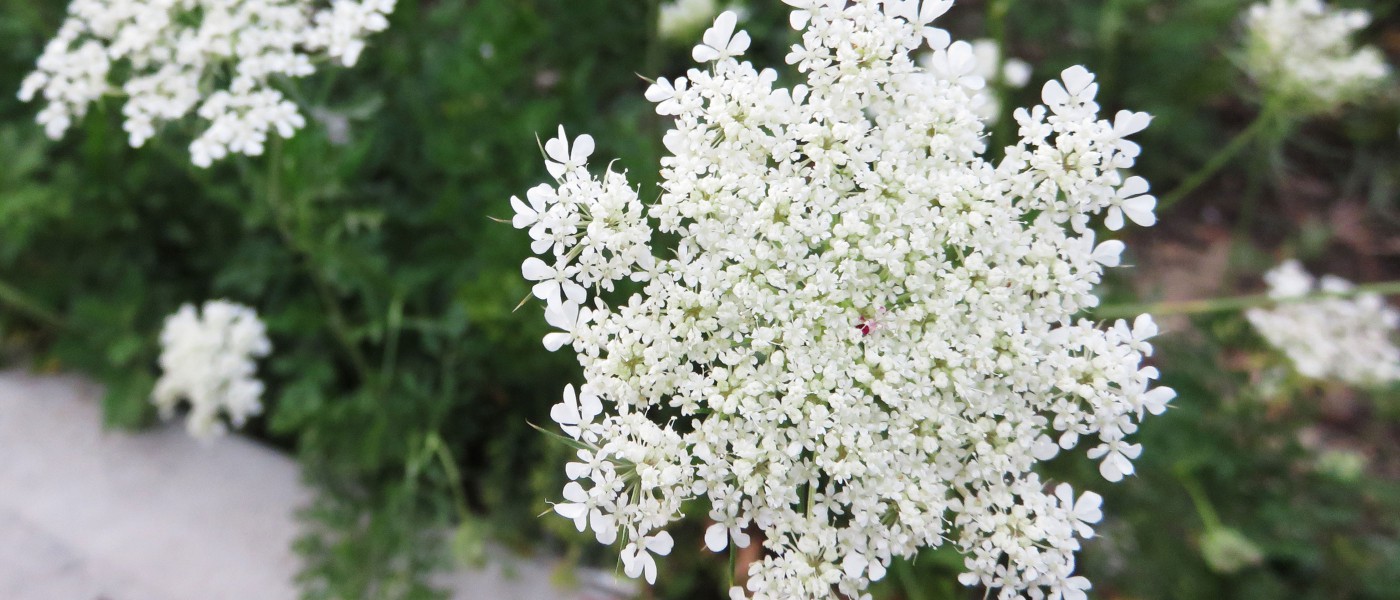Weed of the Month: Queen Anne’s Lace
A favorite in wildflower bouquets, Queen Anne’s lace (Daucus carota) comes into bloom in the heat of late summer. You’ll see its delicate white flowers atop three-foot stems on roadsides and in empty lots, rising above the trash and tangle of other weedy plants around it.
This drought-tolerant member of the parsley family hails from Afghanistan and the surrounding region but has naturalized across Europe and the Americas. It has become ubiquitous here, not just as a weed but also as a garden flower. It can tolerate the infertile soil of cities but proliferates in rural areas, including agricultural fields, to the dismay of many farmers.
A Manhattan florist might charge you $3 for a bundle of the open blooms, but I almost prefer the pollinated flowers, which are furled upward into a bird’s nest–like shape to protect the maturing seeds. Come wintertime you might find a ladybug or other insect hibernating within the dried flower’s cozy confines.
Queen Anne’s lace is related to dill and cilantro and is often referred to as wild carrot. Like the garden carrot (Daucus carota subsp. sativus), it is a biennial plant—completing its life cycle in two years. During the first year, the plant remains vegetative, producing a lacy rosette of rich green leaves and a cream-colored taproot that smells just like a carrot. In its first year, the taproot is much tougher and less sweet than a cultivated carrot, but it is prized for its medicinal properties. Along with almost every other part of the plant, it has been boiled, soaked, dried, and grated over the centuries to treat everything from flatulence to skin ailments to kidney disorders to digestive problems. But beware: The plant closely resembles poison hemlock, another parsley family member. Hemlock can be distinguished from Queen Anne’s lace by the red specks on its stem.
In the second year of its life cycle, Queen Anne’s lace produces the flowers that inspired its common name. Look closely at the flat, disc-shaped flower clusters—called umbels—and you might notice a red or purple floret in the middle. It is said to resemble a drop of blood that, as legend has it, spilled when Queen Anne of Great Britain pricked her finger while tatting lace. Botanically speaking, this tiny speck of color amid a swirl of white is a bit of a mystery. Do these tiny red flowers serve as a pollen guide to attract bees and other pollinators? Or are they a functionless genetic remnant, as Darwin hypothesized? We may never know, but we’ll enjoy this delightful late-summer gift all the same.


